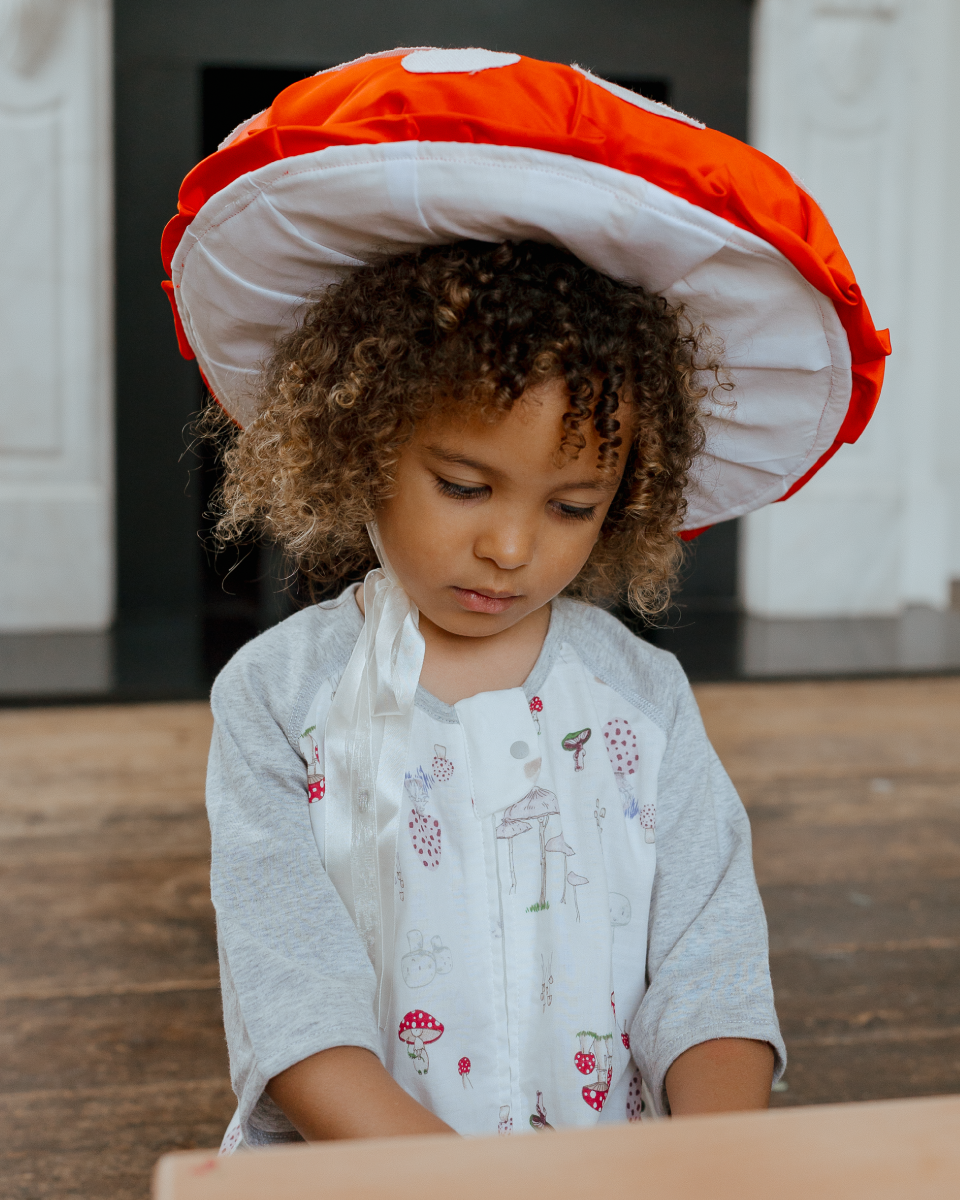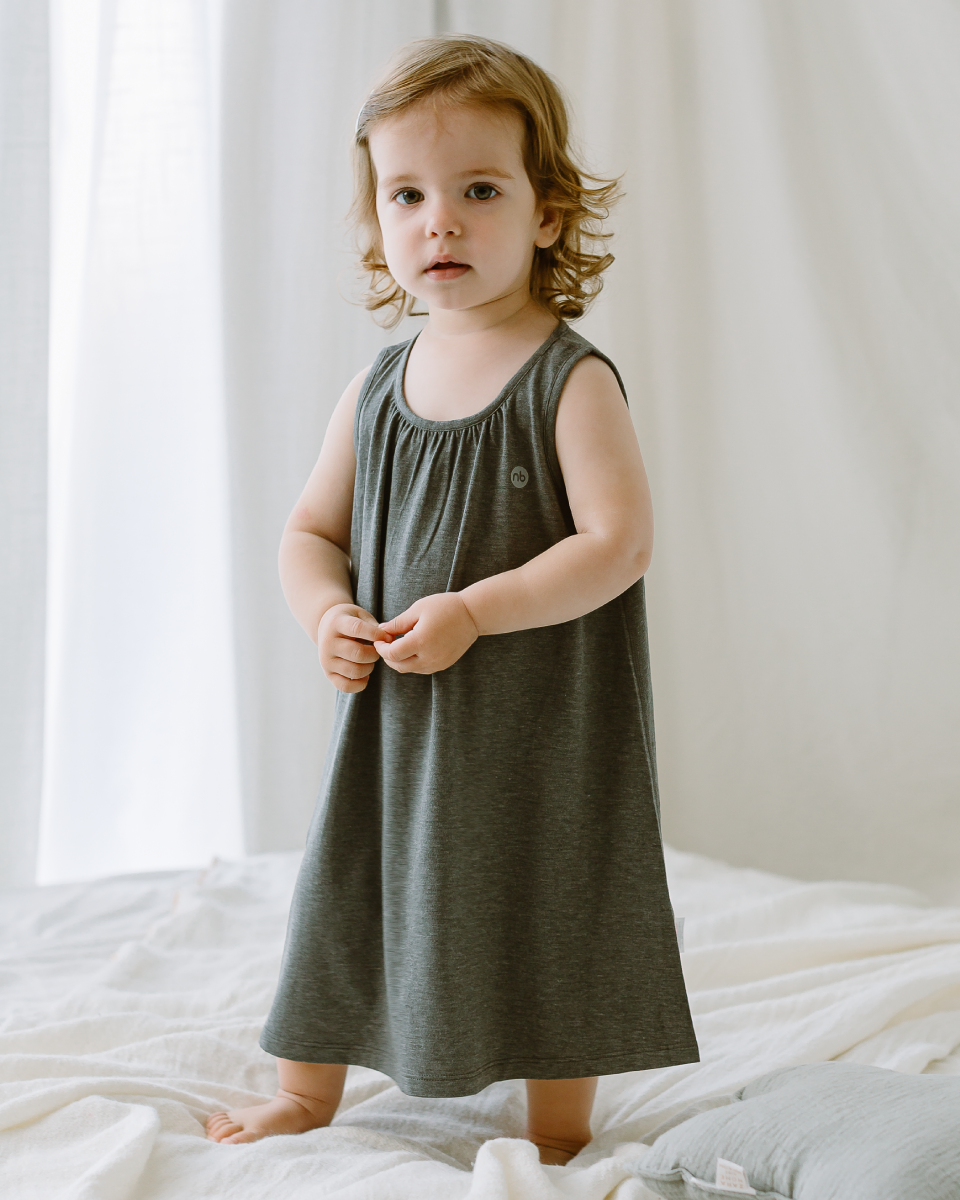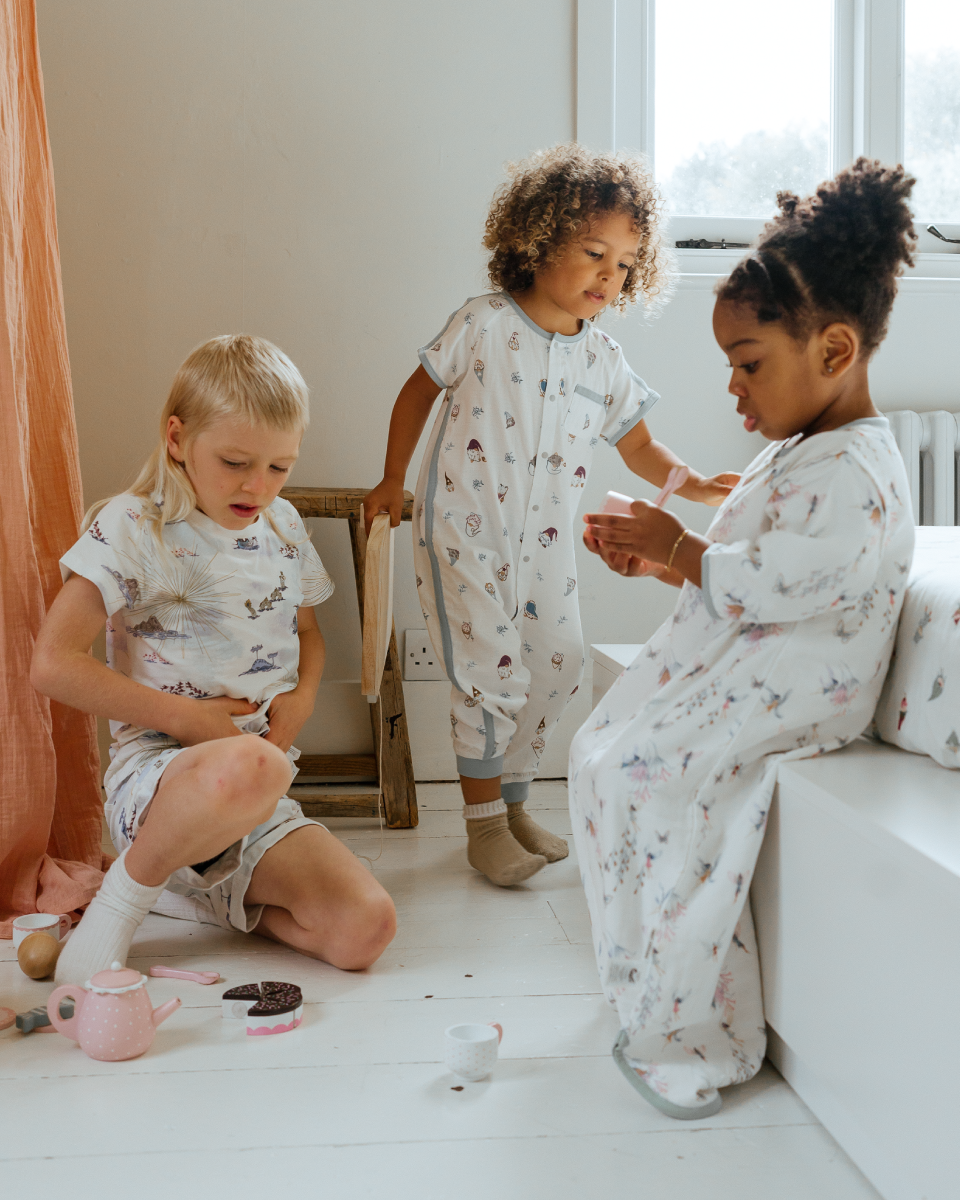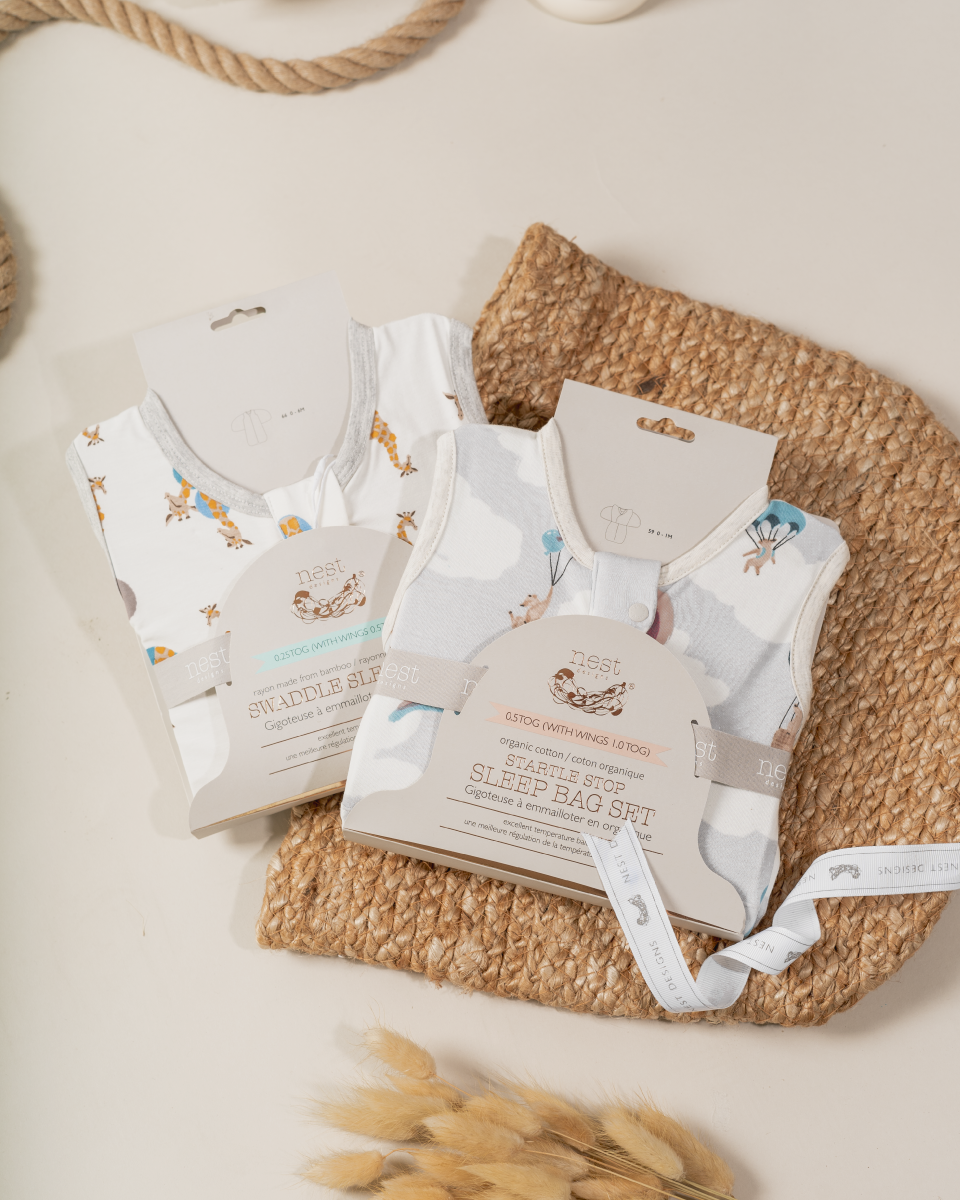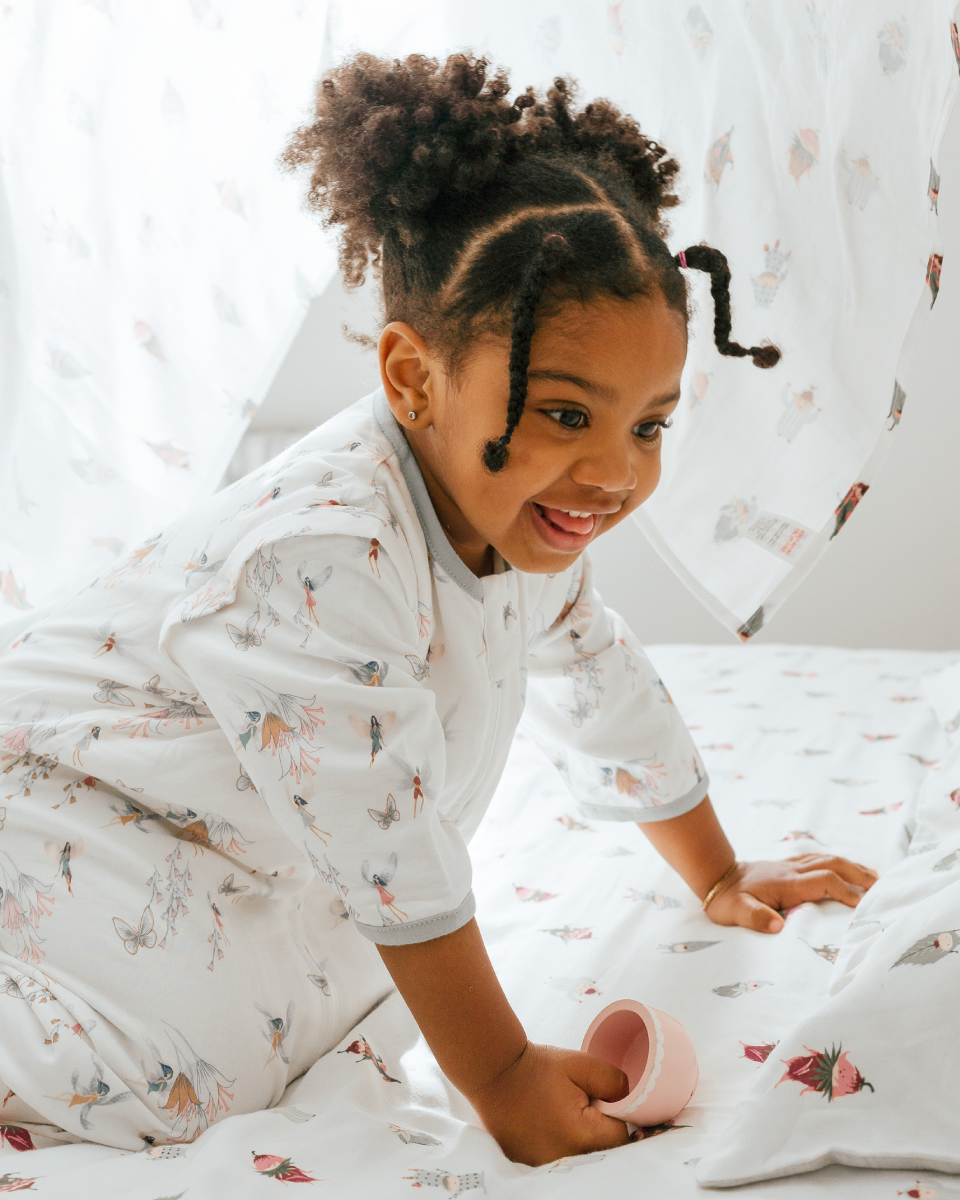
Baby sleep can be complicated. As a parent, your baby’s sleep becomes an important part of your day. Naps become your “me” time - whether it’s for you to rest, take a break, or quickly get things done around the house. At night, it’s your time to decompress and rest yourself. At Nest Designs, some of us have experienced this firsthand and we believe there are factors that can affect your baby’s comfort and sleep at night. In this blog post, we’ve put together a guide to baby sleep with sleep coaches, Ashley Fricker from Mountains of Sleep and Desiree Baird in hopes to get you and your baby better sleep.

#1: Your Baby’s Nursery
Ashley says, “When we are setting our babies up for sleep success we need to look at the whole environment. To create a relaxing sleep environment it should be simple, quiet, and dark.
Let’s look at these factors together.
A simple nursery set-up will help your baby’s body prepare better for sleep. Babies are easily overstimulated and having a room that is simple can help “prevent distractions and reduce stimulation during a time we want our babies to sleep.”, says Ashley. What does simple mean? Think less is more when it comes to decorating and accessorising the nursery.

Your baby’s sleep space whether it is their bassinet or crib should also be simple. “Their sleep surface should be firm with a fitted sheet and there shouldn’t be more than a 3 cm gap between the mattress and side of the crib or bassinet,” says Ashley. This keeps them safe, reduces the risk of Sudden Infant Death Syndrome (SIDS), and creates a calm sleep environment. Your baby’s sleep space should be free from blankets, stuffed toys, pillows, and cushions.
A room that is too quiet can be distracting when there are sounds like a car passing by. This could wake your baby up during their light sleep. Desiree and Ashley recommend a sound machine that produces pink or white noise. Leaving the sound machine on during the night could help drown out some of the sounds in the surrounding environment and help your baby stay asleep more soundly.
As your newborn baby grows older, they’re circadian rhythm will start becoming more like yours and wake up when the sun goes up and go to bed when the sun sets. This is because melatonin is produced when our brains see darkness. Making your baby’s nursery dark from the get-go can help their body’s develop their circadian rhythm and let them know it’s time for sleep. You can do this by installing black out blinds in your baby’s nursery.
Desiree adds, “The temperature of your baby’s room, and your baby, is important. When my children were younger, I purchased a digital thermometer and kept it in my room so I could get a feeling for what the temperature was. You will know if your baby is too hot if they are sweating, or if you put your hand on the back of their neck or chest and it is warm. The ideal temperature is between 68-72 degrees Fahrenheit (20-23 degrees Celsius).
#2: A Consistent Bedtime Routine

Desiree mentions, “I feel having a good routine to cue your baby for sleep and an age-appropriate schedule are equally as important.”
“A bedtime routine doesn’t need to be too long or intricate to be effective, it just needs to be consistent. When instilling a bedtime routine make sure you are creating one that is realistic for your family and something you can implement every night,” Ashley says.
An example of a routine as Desiree mentions could be “short and simple such as putting on pajamas and sleep sack, snuggling while singing a lullaby, giving your baby a goodnight kiss, placing them in their crib or bassinet, turning on the noise machine and then leaving the room so they can drift off on their own.”

At Nest Designs, our personal favourite sleep routine is: bath time with some lavender shampoo and body wash, dressing them a comfy and buttery-soft pair of pajamas, then putting them in a swaddle sleep bag or sleep bag, a bedtime story like Eric Carle’s The Very Hungry Caterpillar, a lullaby and snuggle, a good night kiss, turning on the sound machine, placing them in their crib or bassinet, and then saying good night.
#3: Dressing Your Baby
“Ensure your baby is comfortable with sleep is to ensure while being swaddled that they can still move and the swaddle or sleep bag that you are using is “hip healthy” to encourage healthy hip development. It may be tempting to swaddle your babe tightly, but it’s best to find a product such as Nest Designs’ Organic Cotton Startle Stop Sleep Bag Set which gives your baby a secure and comfortable feeling, but does not restrict their hip motor development.”, Desiree tells us.
Ashley says (and we couldn’t agree more!), “The great thing about Nest Designs is that their products are soft, breathable, moisture-wicking, fast drying and come in different TOG (thermal overall grade) values so you are able to get the appropriate item for your baby's sleep environment.”
To find information on the appropriate TOG to dress your baby in during the Spring and Summer, read our blog post here.
Newborns are born with Moro Reflex (startle reflex) where their body jolts to sudden sounds, light, and movement. To help them feel secure and sleep better, we recommend swaddling your baby. Ashley provides tips for swaddling that include:
- Make sure you use a proper fitted swaddle
- Always place baby on back for sleep
- Make sure baby is dressed appropriately to prevent overheating
- Place baby in a crib or bassinet
- Stop swaddling when your baby shows signs of rolling
A question we hear often is “when do I know to stop swaddling my baby?”. It is recommended to start swaddling once your baby begins to roll. The transition process could be challenging. There are a couple of options as Ashley mentions:
- You can go cold turkey, release both arms, and use a sleep bag. With our Nest Designs swaddle sleep bags, you have the option of wrapping the swaddle wings around their belly to provide that feeling of a mother's warm hand. Once they outgrow the swaddle wings, you can detach the wings completely and turn it into a regular sleep bag.
- You can slowly transition by releasing one arm for a few days and then the other arm later.

#4: Wake Windows
Age-appropriate wake windows can help ensure that your baby doesn’t become overtired or isn’t undertired before bedtime. Wake windows are the time that baby’s spend awake between their naps and bedtime.
Ashley says, “wake windows and sleepy cues can be challenging to navigate but if you combine both together it can increase your success in learning your baby’s sleep needs and getting them to sleep before they become overtired. I’ve provided a Sleep Summary chart to know how long your baby should be awake for between sleep and how much sleep they need. If your little one does not show obvious sleepy cues then this guideline will be a great resource to lean on.”
Desiree mentions, “your child can sleep poorly if overtired –well, poor sleep can occur if your child is under tired as well. This is also called sleep pressure. Having the perfect amount of sleep pressure plays a key role for the best quality sleep. If you have too much or too little it can cause your baby to wake up a lot at night, or take short naps, leaving everyone exhausted and frustrated.”
Your baby might show sleep cues like yawning, rubbing their eyes, staring off, having a blank stare, be fussy, or pull on their ears.
Baby sleep can seem complicated but factors such as making your baby’s nursery a comfortable environment, having a consistent bedtime routine, dressing them appropriately, and following wake windows, can help your baby and you rest better at night.
If you’ve found this information on sleep helpful, you can follow Desiree and Ashley on Instagram.



